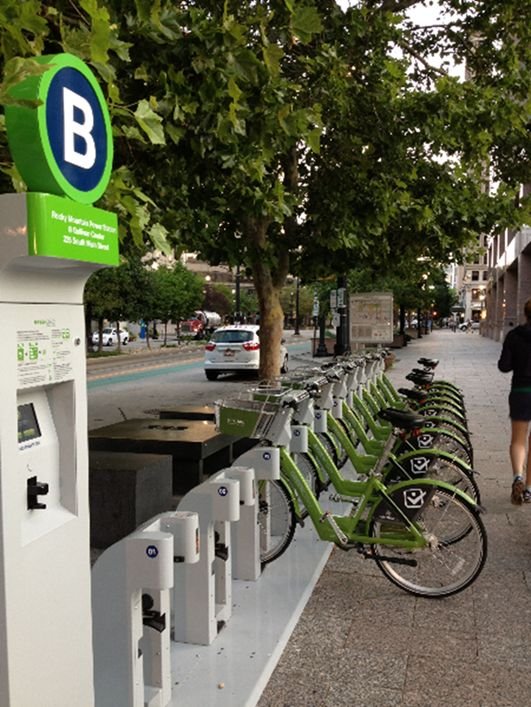Salt Lake City, Utah Adapts to Improve Air Quality Through Smart Growth

In 2014, Salt Lake City was designated a Climate Action Champion Community for their leadership in reducing emissions and increasing climate resilience to air quality concerns from environmental hazards and impacts.
The Sustainable Salt Lake Plan 2015 articulated the city’s broad and ambitious agenda to protect its resources, enhance its assets, and establish a path towards greater community resiliency. The plan set goals to improve air quality, protect community health, and reduce particulate matter (PM) and ozone pollution (which are both projected to be exacerbated by changes in the environment).
The city adopted specific transportation measures to decrease miles traveled, reduce vehicle idling, and promote alternatives. These clean air strategies reduce current air pollution that is expected to intensify from atmospheric changes.
While continuing to address air quality issues, Salt Lake City formulated a vulnerability assessment and adaptation plan. The Salt Lake City Climate Response Plan has evolved over the past several years and the current plan is called Climate Positive 2040. The current plan demonstrates a comprehensive approach to preparedness and resilience that builds off of previous efforts to help the city anticipate, plan and prepare to take action to protect residents from future public health and air quality concerns.
| How Did They Do It? | Applicable EPA Tools |
|---|---|
Salt Lake City identified air quality as a critical vulnerability.
| EPA’s Community-Based Climate Adaptation Handout helps communities identify how local government services may be vulnerable to changing climate conditions. |
Salt Lake City prioritized preparedness actions that provide co-benefits.
| EPA’s smart growth program provides resources on how communities can implement smart growth strategies that provide co-benefits to air, water and public health. |
Similar Cases and More Information
To read more about Salt Lake City's efforts to reduce transportation related air emissions, see the EPA's Sustainable Transportation for a Sustainable Future Page. Salt Lake City implemented air quality actions which also provided mutual benefits. For additional transportation preparedness actions, see Central New Mexico Prepares for Resiliency in Its Long- and Short-Range Metropolitan Transportation Plan.
For an example of other strategy that can provide co-benefits, see how Chicago, IL Uses Green Infrastructure to Reduce Heat Event Impacts. If you would like to know more information about how changes in the environment will affect air quality and human health, view Research on Health Effects from Air Pollution.
- U.S. EPA - Transportation, Air Pollution, and Climate Change
- Chicago, IL Uses Green Infrastructure to Reduce Heat Event Impacts
- Central New Mexico Prepares for Resiliency in Its Long- and Short-Range Metropolitan Transportation Plan
References

